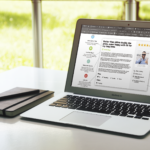Let’s face it: getting a negative review can feel like a punch to the gut. After all, your brand is laser-focused on developing products and experiences that your customers love. And it’s never fun to hear negative feedback about something you’ve worked hard to create.
But negative reviews are inevitable. Even the most well-loved businesses get them from time to time. That’s because it’s simply impossible to create a product that meets the needs of every single customer who comes your way.
Of course, negative reviews are never the end goal. But the good news is, there’s a positive side to negative reviews. Yes, you read that right. In fact, one and two star reviews can actually be good for your business.
Not convinced? Let’s explore how negative reviews can positively impact your brand — and three key actions you can take to get the most benefit from your one and two star reviews.
How Negative Reviews Benefit Your Brand
In an ideal world, every one of your customers would write glowing reviews for the products they purchase. But that’s not reality. And that’s OK.
Getting the occasional one or two star reviews doesn’t mean your business is going under. In fact, one or two star reviews can benefit your business in these four key ways.
Negative Reviews Help you Build Trust with Shoppers
Today, consumers have literally endless shopping options. Of course, there are dozens of things a consumer considers when determining which companies to do business with — and which to pass up. But one top consideration is trust.
Research from Edelman found that 81% of consumers say they must be able to trust a brand prior to making a purchase. And 70% indicate trusting a brand is more important now than in the past.
In order to earn that trust, brands must be transparent. And a key way to do that is to display feedback from other shoppers — including the negative kind. When shoppers see negative reviews, they see you have nothing to hide. And that lets them know you’re a brand they can trust.
Negative Reviews Increase Product Sales
You might assume that the higher the average star rating of a product, the more likely a shopper is to buy it. And that’s true — up to a point.
We partnered with Northwestern University and made an interesting discovery, though. We found that a shopper is actually more likely to purchase a product when it has some negative reviews.
In fact, our research found that purchase probability peaks when a product’s average star rating is between 4.2 and 4.5 (it varies a bit by product category). If the average star rating surpasses 4.5, the likelihood of purchase actually drops.
Let’s look at an example. In the chart below, we can see that the purchase probability for salon haircare products peak at 4.4 stars. When the average star rating surpasses 4.4, the purchase probability goes down. In other words, a shopper is more likely to purchase a product with an average star rating of 4.4 than one with a five star rating.
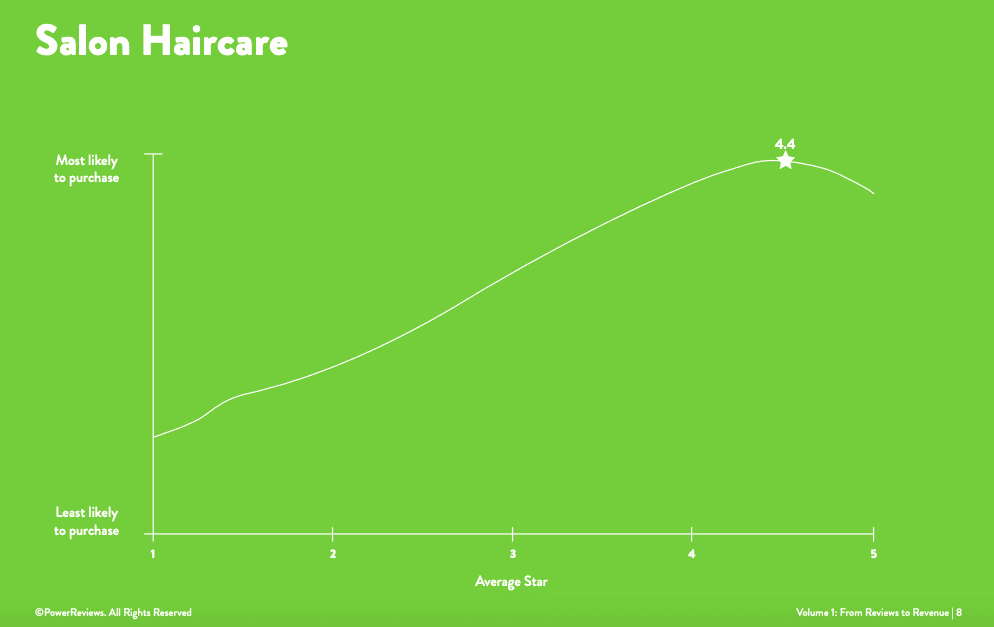
But why is that the case? Because consumers perceive products with perfect five star ratings as too good to be true. If there are no negative reviews, a shopper may even jump to the conclusion that a brand is hiding something — and that they shouldn’t be trusted.
On the other hand, the occasional negative review can actually boost sales of a product, as this content brings your average star rating closer to that sweet spot of 4.2-4.5
Negative Reviews Help Consumers Make Better Purchase Decisions
Shoppers depend on negative reviews to determine which products fit their needs — and which don’t. Our research found that a staggering 85% of shoppers seek out negative reviews.
To elaborate on why this may be the case, our research also highlights that a third of shoppers say that poor reviews gave balance to their shopping research, stating that a negative perspective was either a ‘very important’ or ‘important’ factor influencing their decision.
In fact, when researching products, two-thirds of ecommerce shoppers filter for one-star reviews. These visitors still convert at 108% the rate of general web traffic (incidentally, this is the type of insight our PDP Site Analytics solution routinely surfaces).
But why is this the case? Here are three things we’ve noticed from speaking to brands and looking at this data day-in, day-out:
1. Based on the negative reviews, the shopper determines the product isn’t a good fit for their needs. They keep searching for a product that’s a better match — and you avoid an unhappy customer and an unnecessary return.
2. The shopper determines the feedback in the one and two star reviews isn’t relevant to them– so they disregard it. For example, let’s say a shopper is looking for shoes for their toddler. They scroll to the reviews and filter to see only one and two star content. Most of the negative reviews are focused on how the shoes aren’t good for kids with wide feet. The shopper’s daughter doesn’t have wide feet, so this feedback isn’t relevant. She decides to purchase the shoes anyway.
3. The shopper determines the worst case scenario isn’t a concern — so they purchase the product anyway. For example, imagine a shopper is researching dining tables. She filters to see only one and two star reviews to better understand the absolute worst case scenario. Most of the negative reviews are focused on difficult assembly. This particular shopper is very handy and enjoys building furniture — so she doesn’t find this concerning. In fact, she sees this feedback as a problem with the reviewers rather than the product itself
In each of these three situations, negative reviews helped a shopper make a more informed purchase decision. Of course, when shoppers are happy with their purchases, they’re more likely to become loyal — and a lot less likely to return the merchandise they bought.
Negative Reviews Shed Light on Fixable Issues
One and two star reviews can help you identify issues with your products or services that you may not have known about otherwise. This feedback can help inform improvements that’ll allow you to better serve your customers.
For example, let’s say you sell a children’s play kitchen that has a high return rate. Unfortunately, you don’t have much data on the reasons for the returns. However, you notice the product has a pretty low average star rating. And several of the reviews mention that the product was impossible to assemble because the pieces didn’t line up correctly.
So, you bring this feedback to your manufacturer to improve the quality control process for the product. And then, you observe how the average star rating goes up after this improvement.
Three Ways to Leverage Negative Reviews to Boost Your Bottom Line
So negative reviews can positively impact the performance of your brand. In fact, they should be viewed as an opportunity to do just that.
Here are three ways how:
1. Display Negative Reviews
It might be tempting to filter out negative reviews. But avoid the temptation. One and two star reviews add a layer of authenticity to your content and let shoppers know you’re a brand they can trust. What’s more, negative reviews help your shoppers make more informed purchase decisions, which will help decrease returns and boost loyalty.
So be sure to display all reviews, regardless of star rating.
In addition, allow shoppers to easily spot the “worst case scenario” — and determine whether it’s relevant or important to them. Our friends at Athleta do this in a couple different ways. First, shoppers can filter reviews by a specific star rating.
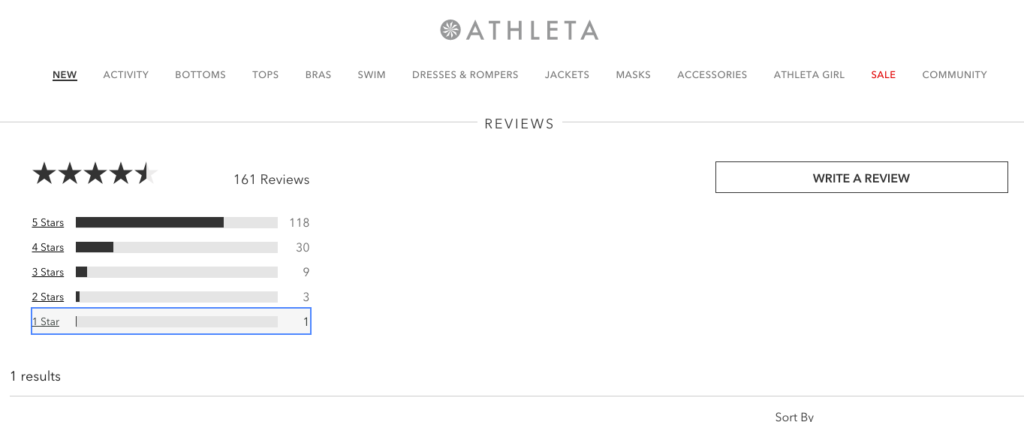
Shoppers can also sort reviews by the lowest rating.
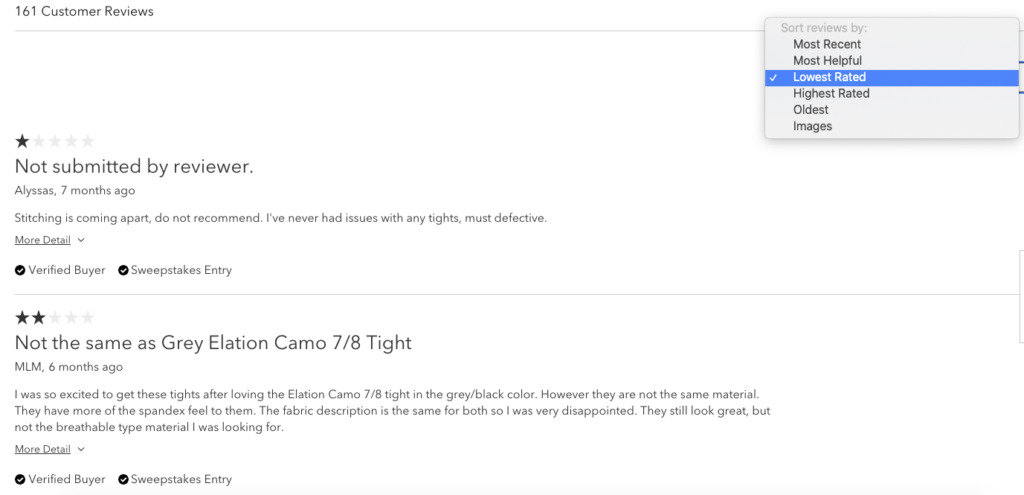
Finally, consider displaying the most helpful positive review alongside the most helpful negative review for a given product, as our friends at ULTA do. Again, this is a great way to help shoppers easily identify the worst case scenario. And this helps them find the products that best fit their needs.
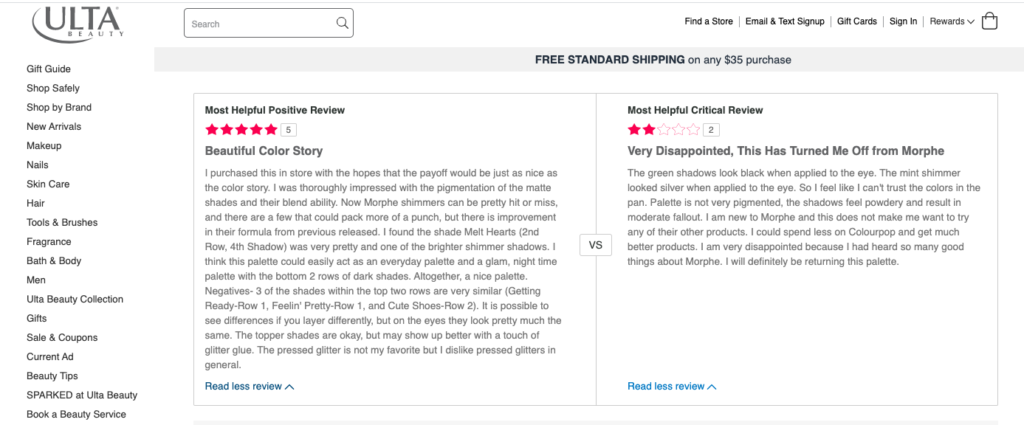
2. Respond to Negative Reviews
When you get a negative review, don’t just cross your fingers and hope it’ll quickly get covered up by positive reviews. Instead, face the review head-on by responding to it.
When you respond to a negative review, you have the opportunity to turn a bad situation around and salvage a relationship with your customer. If you’re able to fix the issue, the shopper is likely to buy from you again. What’s more, your response will show future shoppers that you value your customers and are committed to helping them resolve their issues. And that’ll give these new customers the confidence they need to make a purchase.
Remember: when it comes to responding to negative reviews, time is of the essence. If a customer is left hanging, they’ll only get more upset.
In addition, avoid using a generic, canned response — and don’t get defensive. Instead, personalize your response by using the shopper’s name and address the specific issues raised in the negative review. Our friends at Organic Valley do a great job writing personalized responses to negative reviews.
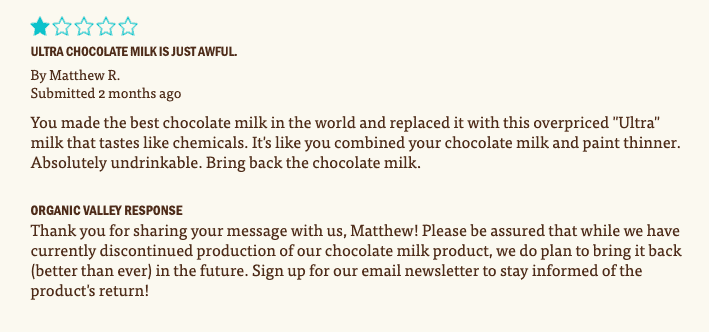
Finally, take things offline when needed. Sometimes you’ll need more details from the shopper in order to resolve their issue. But be sure to post a public response too, as it’ll let the customer (and future shoppers) know you’re taking action. Here’s a great example of a response from our friends at Clinique, inviting the reviewer to do a live chat to resolve their issue.

3. Analyze Negative Reviews to Identify Actionable Insights
In some cases, a negative review might mention an isolated issue. For example, a product might be damaged in transit.
But in other cases, a negative review can point to a larger issue that needs to be addressed. For example, one of our customers noticed several negative reviews for a watch that mentioned a broken clasp. They rectified the problem and their ratings subsequently improved.
Be sure you’re regularly analyzing your review content to gauge sentiment and identify issues early on. Then, use the insights you uncover to improve your products or messaging/marketing of those products or whatever else the data says needs adjusting.
With the right tool, you can also benchmark against your competitors. Compare by product rating, sentiment, key themes and so on by product, brand, and product category. This is critical insight to improving overall strategic direction and performance.
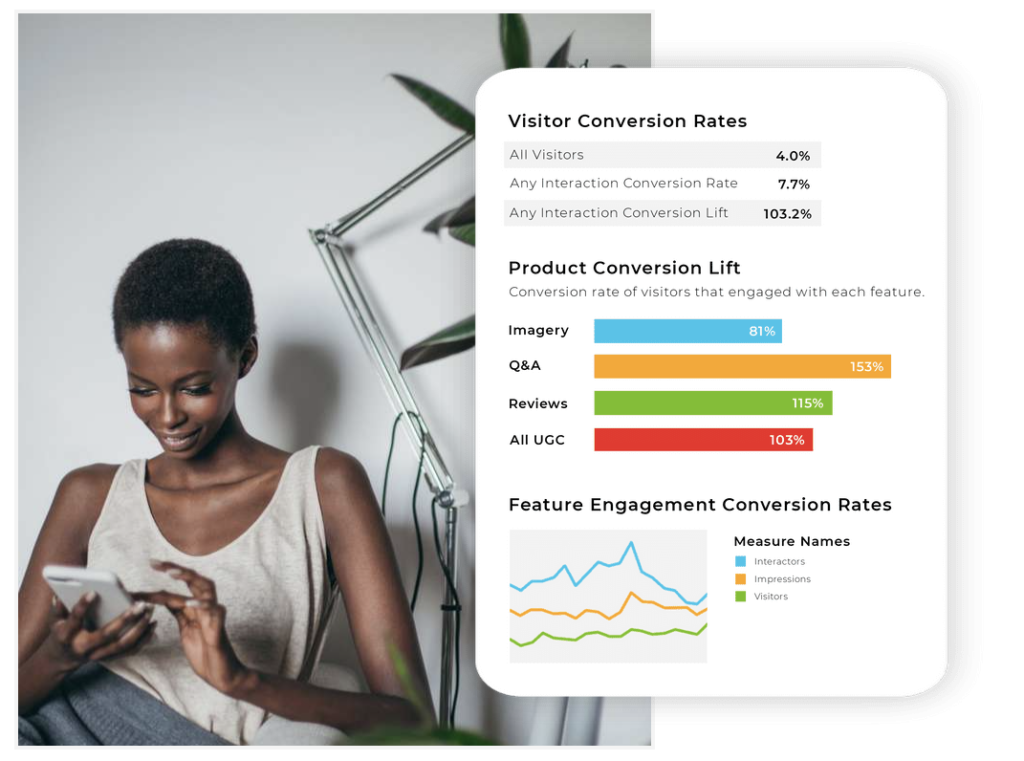
Start Embracing Negative Reviews
No business sets out to get negative reviews. But – if you are faced with a scenario where you do receive them – they are authentic and honest feedback from real customers. So the last thing you should do is brush them under a metaphorical rug.
Rather than being fearful of negative reviews, start embracing them. Not only are they a key tool that shoppers depend on to make confident purchase decisions, they’re full of insights that can help you improve your products and business, better serve your customers and ultimately generate more revenue.




